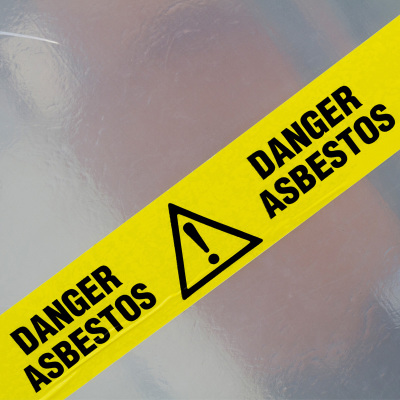IAQ: An In-depth Look at Asbestos
 Despite being banned in many common materials, asbestos is still a public health concern.
Despite being banned in many common materials, asbestos is still a public health concern. Asbestos, a group of mineral fibers, gained popularity during the Industrial Revolution due to their durability and ability to resist high temperatures. Asbestos has been used since the early 20th century as an inextinguishable building material. It was also used extensively for insulation purposes due to the heat resistant properties of these fibers. The health impacts from asbestos are well documented, but since it was used so heavily in the 20th century it is still found in buildings today. Despite its known health impacts asbestos has stood the test of time, which isn’t necessarily a problem. Asbestos becomes an issue when fibers are released into the air when asbestos containing materials (ACMs) are broken down and become damaged.
In 1927, asbestos was found to be linked to lung problems in workers who mined the minerals and were exposed to fine airborne asbestos particulates. This disease was termed “Asbestosis” and was characterized by difficulty breathing and coughing from scarring on the lungs. It can take up to 30 years after exposure for symptoms to appear. Two decades later in 1949, asbestos was found to be a cancer causing agent. However, asbestos wasn’t officially categorized as a carcinogen until 1960 when Mesothelioma was determined to be caused by asbestos exposure. At this point in time, the U.S. government began to take action and through the Environmental Protection Agency (EPA), spray-on asbestos and asbestos based insulation materials were banned in 1972 and 1976, respectively.
Before the 1970s, asbestos was used extensively in the following materials:
- Insulation: pipes, pipe fittings, boilers and breeching;
- Surfacing: acoustical ceiling plaster and spray-on fireproofing;
- Other Materials: roofing, fire doors, plaster, floor tile and mastic.
However, there are many other materials and locations where asbestos may be found.
Asbestos Regulations and Agencies
Regulations are administered by Federal and State sources. Agencies such as the EPA, Occupational Safety & Health Administration (OSHA), Pennsylvania Department of Labor & Industry (PaDLI) and Department of Environmental Protection (PaDEP) provide guidance for asbestos removal and air monitoring. The EPA’s National Emissions Standards for Hazardous Air Pollutants(NESHAPs) program helps to determine which demolition and renovation projects are subject to regulations. The Asbestos Hazard Emergency Response Act (AHERA) requires educational facilities (K-12) to have asbestos management plans in place that include routine inspections and asbestos response plans to prevent or reduce hazards. Air sampling is required to determine whether the area is safe for re-occupancy following asbestos abatement response action. All asbestos containing materials removed from public and commercial buildings are required to be disposed of in EPA designated landfills, based on the type of material (friable or non-friable).
Asbestos Myths
While we understand the health implications associated with exposure to asbestos fibers, there are a few myths that can be misleading.
MYTH: Asbestos materials in your place of business or school will harm you.
False. Asbestos fibers are harmful when airborne during removal or when the asbestos containing material is damaged. If renovation or construction projects have the potential to impact these materials, the asbestos containing materials are removed under containment by a licensed asbestos abatement contractor in order to keep building occupants risk free. Element Environmental Solutions (E2S) works with the building owner and abatement contractors to monitor air quality and keep occupants safe. Once abatement is completed, E2S provides clearance air testing to determine if the area is safe for re-occupancy.
MYTH: Asbestos must be removed from a building if it is found.
False. Removal is only required if the asbestos containing material is damaged or will be disturbed by renovation or construction efforts. Asbestos contained around piping or under floor tiles does not risk the health of building occupants until fibers become airborne.
Asbestos Management
Element Environmental Solutions (E2S) has the expertise to ensure your facility is meeting asbestos regulatory requirements from initial inspection through post construction monitoring. During abatement projects, E2S provides oversight to monitor daily air quality inside containment work areas (ISWA) and outside (OSWA) to determine the potential extent of airborne asbestos fibers. Once abatement is completed, E2S will determine if work area is safe for re-occupancy through clearance samples. Clearance samples provide evidence that airborne fiber levels are at the recommended safe levels. As always, our staff will work closely with project managers, building owners and abatement crews to provide a safe indoor environment for building occupants, while adhering to pertinent regulations.
This is the first post in our Indoor Air Quality (IAQ) series where we’ll take a closer look at hazardous materials commonly found in older buildings. We’ll discuss the history, health impacts and how to minimize risks associated with each of these materials. If you have questions, or would like to learn more, please contact Element.